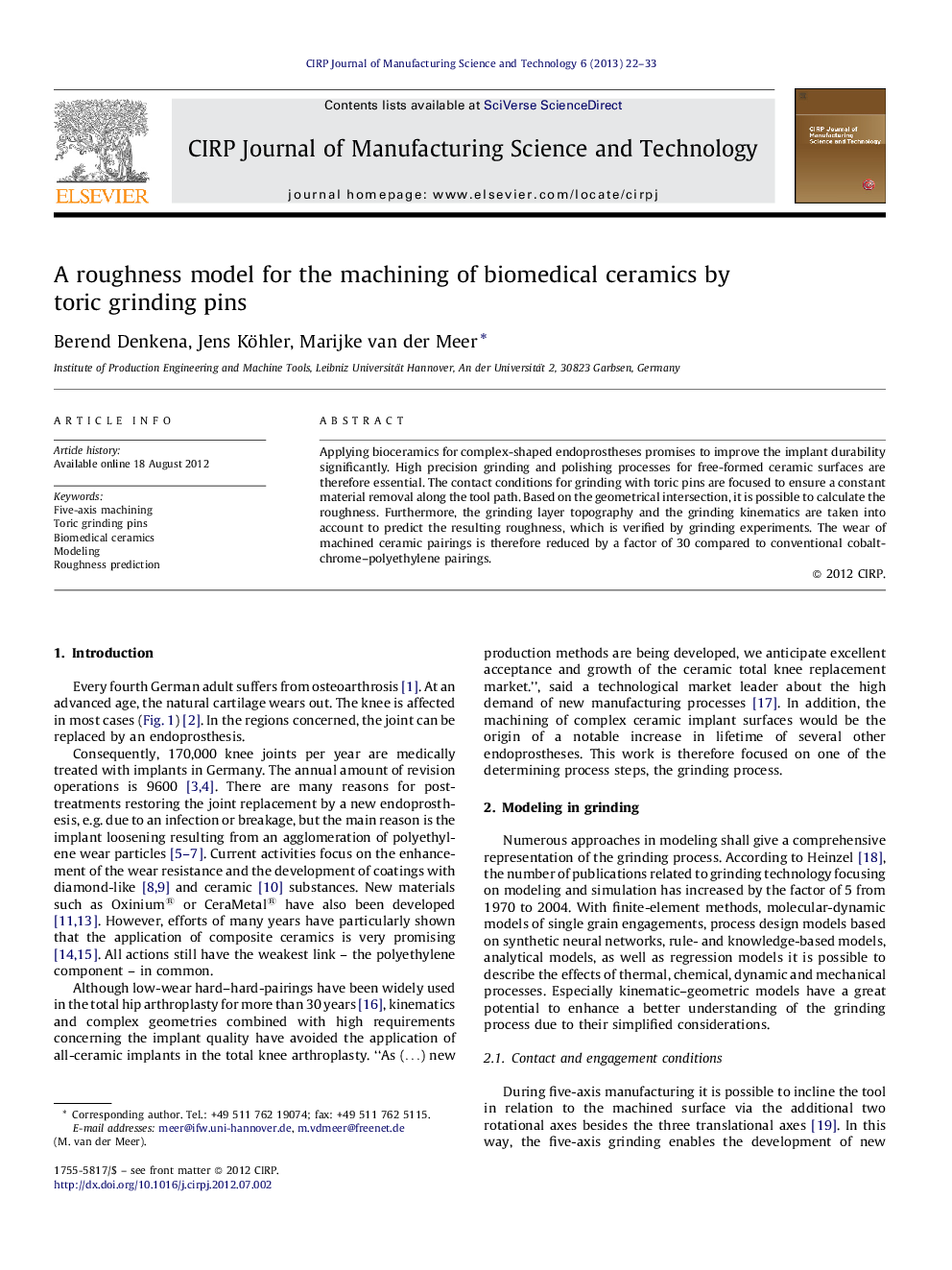| Article ID | Journal | Published Year | Pages | File Type |
|---|---|---|---|---|
| 1679672 | CIRP Journal of Manufacturing Science and Technology | 2013 | 12 Pages |
Abstract
Applying bioceramics for complex-shaped endoprostheses promises to improve the implant durability significantly. High precision grinding and polishing processes for free-formed ceramic surfaces are therefore essential. The contact conditions for grinding with toric pins are focused to ensure a constant material removal along the tool path. Based on the geometrical intersection, it is possible to calculate the roughness. Furthermore, the grinding layer topography and the grinding kinematics are taken into account to predict the resulting roughness, which is verified by grinding experiments. The wear of machined ceramic pairings is therefore reduced by a factor of 30 compared to conventional cobalt-chrome–polyethylene pairings.
Related Topics
Physical Sciences and Engineering
Engineering
Industrial and Manufacturing Engineering
Authors
Berend Denkena, Jens Köhler, Marijke van der Meer,
